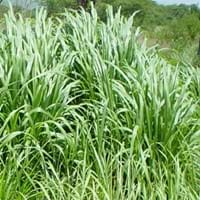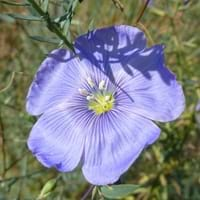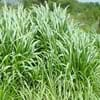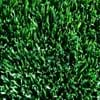Life Span
Perennial
Annual and Perennial
Origin
Middle Africa
Europe, Asia
Types
Not Available
Herbaceous perennial
Habitat
Floodplains, Forest margins, Tropical regions, waterways, Wet lands, Woodlands
Grassland
USDA Hardiness Zone
7-11
4-8
Sunset Zone
A1, A2, A3, H1, H2, 1a, 1b, 2a, 2b, 3a, 3b, 4, 5, 6, 7, 8, 9, 10, 11, 12, 13, 14, 15, 16, 17, 18, 19, 20, 21, 22, 23, 24
2a, 2b, 3a, 3b, 4, 5, 6, 7, 8, 9, 10, 11, 13, 14, 15, 16, 17, 18, 19, 20, 21, 22, 23, 24
Habit
Clump-Forming
Clump-Forming
Flower Color
Sandy Brown
White
Flower Color Modifier
Bicolor
Bicolor
Fruit Color
Non Fruiting Plant
Tan
Leaf Color in Spring
Purple
Green, Blue Green
Leaf Color in Summer
Light Green
Green, Blue Green
Leaf Color in Fall
Purple
Green, Blue Green
Leaf Color in Winter
Purple
Light Green
Leaf Shape
Long Linear
Tiny
Plant Season
Spring, Summer, Fall, Winter
Summer
Sunlight
Full Sun
Full Sun, Partial Sun, Partial shade
Growth Rate
Very Fast
Fast
Type of Soil
Clay, Loam, Sand
Loam, Sand
The pH of Soil
Acidic, Neutral, Alkaline
Acidic, Neutral, Alkaline
Soil Drainage
Well drained
Well drained
Bloom Time
Summer, Late Summer
Early Summer, Summer
Tolerances
Cold climate, Drought, Salt
Drought
Where to Plant?
Ground
Container, Ground
How to Plant?
Budding, Seedlings
Seedlings, Stem Cutting
Plant Maintenance
Low
Medium
Watering Requirements
Requires regular watering, Water more in summer
Needs less watering
In Summer
Lots of watering
Lots of watering
In Spring
Moderate
Moderate
In Winter
Average Water
Average Water
Soil pH
Acidic, Neutral, Alkaline
Acidic, Neutral, Alkaline
Soil Type
Clay, Loam, Sand
Loam, Sand
Soil Drainage Capacity
Well drained
Well drained
Sun Exposure
Full Sun
Full Sun, Partial Sun, Partial shade
Pruning
Remove dead leaves, Remove dead or diseased plant parts
Remove damaged leaves, Remove dead branches, Remove dead leaves
Fertilizers
Nitrogen, organic fertlizers
All-Purpose Liquid Fertilizer
Pests and Diseases
Insects, Red blotch
Red blotch
Plant Tolerance
Cold climate, Drought, Salt
Drought
Flower Petal Number
Single
Single
Foliage Texture
Fine
Fine
Foliage Sheen
Glossy
Matte
Attracts
Birds, Flying insects
Butterflies
Allergy
Asthma, breathing problems
Not Available
Aesthetic Uses
Not Used For Aesthetic Purpose
Landscape Designing
Beauty Benefits
No Beauty Benefits
Not Available
Environmental Uses
Air purification, Amazing growth rate, Food for animals, Food for insects, Prevent Soil Erosion, Shelter for wildlife, Wildlife, Windbreak
Air purification
Medicinal Uses
Eye Problems, Headache, Skin Disorders, Wounds
Antirheumatic, Burns, Cold, constipation, Cough, Emmoiliant, Eye Problems, Sore throat, Stomachic, Swelling, Tonsillitis
Part of Plant Used
Leaves, Seeds
Flowers, Leaves, Seeds
Other Uses
Food for animals, Used As Food
Cosmetics, Medicinal oil, Used As Food
Used As Indoor Plant
No
Yes
Used As Outdoor Plant
Yes
Yes
Garden Design
Bedding Plant, Feature Plant, Foundation, Mixed Border
Bedding Plant, Container, Edging, Mixed Border, Rock Garden, Wall, Wildflower
Botanical Name
PENNISETUM purpureum 'Prince'
LINUM perenne 'Album'
Common Name
Elephant Grass
Perennial Flax
In Hindi
हाथी घास
linum perenne
In German
Elefantengras
Linom perenne
In French
l'herbe à éléphant
Linom perenne
In Spanish
pasto elefante
linom perenne
In Greek
ελέφαντα χόρτο
Linum perenne
In Portuguese
capim-elefante
linum perenne
In Polish
trawa słoniowa
len trwały
In Latin
elephanti herba
Linum perenne
Phylum
Magnoliophyta
Magnoliophyta
Class
Liliopsida
Magnoliopsida
Clade
Angiosperms, Commelinids, Monocots
Angiosperms, Eudicots, Rosids
Tribe
Paniceae
Not Available
Subfamily
Panicoideae
Not Available
Number of Species
Not Available
Not Available
Season and Care of Elephant Grass and Perennial Flax
Season and care of Elephant Grass and Perennial Flax is important to know. While considering everything about Elephant Grass and Perennial Flax Care, growing season is an essential factor. Elephant Grass season is Spring, Summer, Fall and Winter and Perennial Flax season is Spring, Summer, Fall and Winter. The type of soil for Elephant Grass is Clay, Loam, Sand and for Perennial Flax is Loam, Sand while the PH of soil for Elephant Grass is Acidic, Neutral, Alkaline and for Perennial Flax is Acidic, Neutral, Alkaline.
Elephant Grass and Perennial Flax Physical Information
Elephant Grass and Perennial Flax physical information is very important for comparison. Elephant Grass height is 120.00 cm and width 120.00 cm whereas Perennial Flax height is 10.20 cm and width 25.40 cm. The color specification of Elephant Grass and Perennial Flax are as follows:
Elephant Grass flower color: Sandy Brown
Elephant Grass leaf color: Purple
Perennial Flax flower color: White
- Perennial Flax leaf color: Green and Blue Green
Care of Elephant Grass and Perennial Flax
Care of Elephant Grass and Perennial Flax include pruning, fertilizers, watering etc. Elephant Grass pruning is done Remove dead leaves and Remove dead or diseased plant parts and Perennial Flax pruning is done Remove damaged leaves, Remove dead branches and Remove dead leaves. In summer Elephant Grass needs Lots of watering and in winter, it needs Average Water. Whereas, in summer Perennial Flax needs Lots of watering and in winter, it needs Average Water.





